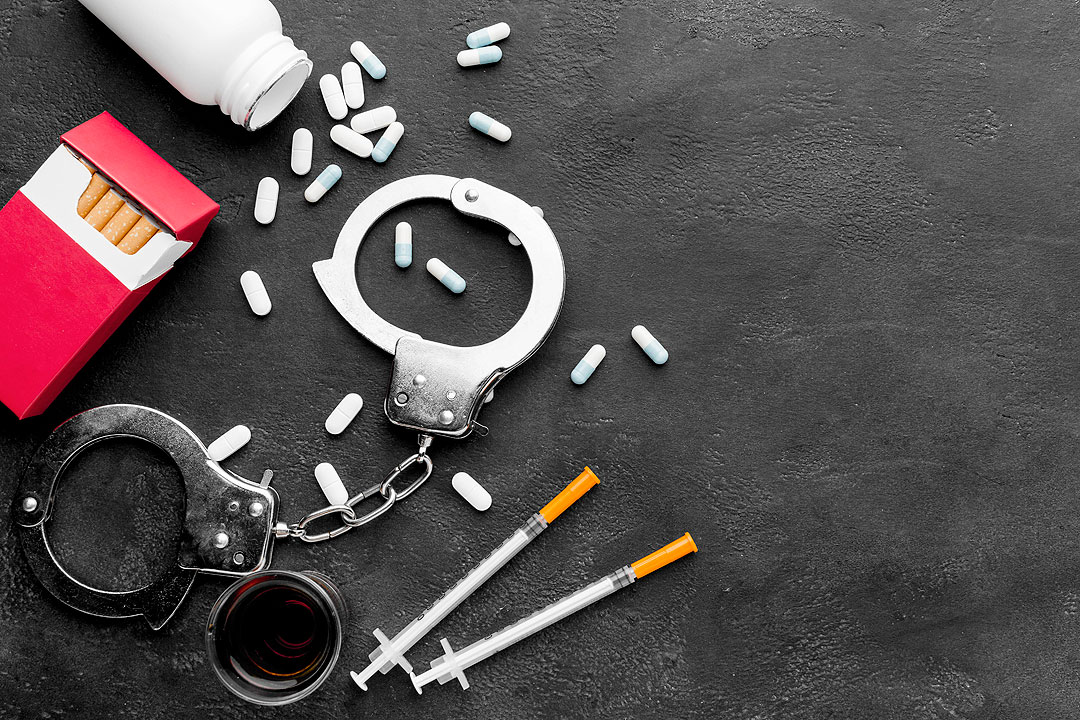
Yellow Pad
By Ella Iellamo

What do prostitution, drugs, alcohol, and nicotine addiction have in common? They all demoralize and harm society. Since they cause harm, strict regulation is absolutely necessary.
Strict regulation, however, can take different forms. A persistent difficult behavior like engaging in prostitution, drugs, binge drinking or smoking may cause a government to use threats or coercion. Worse, the government resorts to criminalizing some activities like prostitution and drug use.
Criminalization of certain activities deemed harmful to society, however, can do more harm than good. The case of prohibition of alcohol in the United States in the last century stands out as a negative example of criminalizing an activity. The Prohibition may have discouraged alcohol drinking but did not eliminate it. Worse, it deepened criminality and violence, and made otherwise harmless people into criminals. The Prohibition was eventually lifted, an acknowledgement of a failed policy.
The appropriate policy is very contextual. In many cases, instead of criminalization, a better benign approach is harm reduction. But the concept of harm reduction can also be manipulated and distorted.
I first learned about harm reduction as an essential political tool during my college thesis writing class. A controversial topic got my interest after watching a Jay Taruc documentary regarding prostitution in the country. The current policy focusing on criminalizing and penalizing prostitutes is so anti-poor and discriminatory. Most of the victims are women from poor or hard-up families. Yet, making prostitution a crime has not ended the oldest profession in the world. Unfavorable economic conditions like the rise of unemployment make prostitution viable.
Having a progressive mindset, I thought: “Oo nga no, sex work is work.” So, for my political science thesis paper, I wrote about a harm reduction strategy to decriminalize adult prostitution, and at the same time combat the rising abuse cases, human trafficking, and prostitution of minors. I pushed for strict regulations that protected the rights and welfare of sex workers, not criminalization, which punished them.
Harm reduction is both a principle and practice with the aim of improving the safety of people who engage in potentially risky behavior. It is a strategy that is directed toward individuals or groups to mitigate or minimize the negative impact or effects associated with certain behaviors.
Sweden is one country that leads the way in harm reduction as applied to prostitution. Sweden introduced a law in 1995 that says that the “seller” of sexual services (or the prostitute) should not be punished. The result was a decline in unsafe, risky street prostitution by 50% since the law’s implementation until 2014. Violence against both female and male prostitutes also decreased by 20% and 25%, respectively, during the same period.
In the Philippine policy environment, harm reduction can also be used as an approach to prevent teenage pregnancy, drug abuse, and nicotine abuse, among others. But authorities prefer an iron-fist policy, and sideline harm reduction for some risky behaviors like prostitution and drug use.
Further, in some areas where harm reduction is ostensibly done, its use is superficial, or even deceptive. What happens then in this case is not harm reduction but harm promotion.
Take the case of President Rodrigo Duterte’s war on drugs. Its violent nature, leading to thousands being killed, contradicts the harm reduction objective. Moreover, the war against drugs has turned into a war against the poor. Most of the civilians killed or targeted in the anti-drug operations come from poor families and impoverished areas.
Near the end of his term, the President has acknowledged that his administration has not solved the drug menace. Recall that his campaign promise was to end the drug problem within the first year of his term.
A harm reduction strategy would have recognized that drug use could not be eliminated, and the important and realistic goal would have been substantially reducing the harm from drug abuse. This could have been done through having good healthcare and treatment facilities, having access to safer alternatives (for example, giving clean and safe needles to those already hooked on opioids), providing counseling and establishing support groups, etc.
A bolder harm reduction policy is to decriminalize drug use. The fact is, many of those using drugs are not habitual users. But when caught, they are sent to jail, making their lives more miserable. The majority of prison inmates are users of drugs, but they do not pose a threat to society. Why jail them? Such an iron-fist policy is ineffective to deal with drug abuse, and it actually results in harm promotion.
But the term “harm reduction” is also being used as a camouflage for harm promotion. Take the case of the Vape Bill, which Congress recently approved. It is packaged as a harm reduction strategy for nicotine abuse.
The proponents claim that vapes and e-cigarettes, most commonly known as electronic nicotine and non-nicotine delivery systems (ENDS/ENNDS) and heated tobacco products (HTPs), are a substitute for harmful cigarettes. The vape proponents say that vape use is harm reduction since vape products are less harmful than cigarettes. That can be true for smokers, even though the jury is out whether vaping is an effective smoking cessation tool.
But here’s the rub. The said bill relaxes the provisions of RA 11467. The existing law strictly regulates vapes, e-cigarettes, and heated tobacco products. It is thus deceptive to say that the new bill introduces harm reduction. There is already a law on vaping that is consistent with harm reduction, but the bill that intends to supplant the current rules will be a deregulation of vaping.
The vape bill, lowers the age of access to vapes and e-cigarettes from 21 years old to 18 years old; transfers regulatory jurisdiction from the Food and Drug Administration (FDA) to the Department of Trade and Industry (DTI); and reverses the ban on multiple flavors.
A Vera Files study says that these provisions in the bill have the intention of enticing the non-smokers, especially the youth, to purchase and use vape products. For instance, e-juices for vapes sold online are categorized under the “toys, games, and collectibles” section on e-commerce websites. Another indication that vaping is mainly targeted to non-smokers is the fact that some of the e-juice flavors, such as bubblegum, marshmallow, and “Yakult,” are being advertised as “beginner-friendly.”
Recall that harm reduction is meant to minimize adverse effects, in this case those associated with nicotine addiction. Introducing vaping to non-smokers or enticing them to do so cannot be called harm reduction. Vaping-related injuries are well-documented; yet legislators endorse vape use by relaxing the regulations. The vape bill is far from being a harm reduction strategy. It is for this reason that the medical associations (except for a handful of doctors defying their associations) want the President to veto the vape bill.
To conclude, much still has to be done for policy-makers, politicians and the public at large to understand and appreciate what harm reduction is.
Since harm reduction is principally a health issue, the health organizations, including the Department of Health (DoH), assume a leading role in the promotion of harm reduction. We must acknowledge the centrality of health practitioners in the decision-making process to shape public health policies, including those on harm reduction. That is why it does not make sense that the regulation of vape products is removed from DoH and transferred to the Department of Trade and Industry.
That said, harm reduction is a whole-of-society approach. The harm inflicted on prostitutes can be minimized by having institutions and policies that generate quality jobs and that provide robust social welfare programs. The harm suffered by drug users can be reduced by making social conditions less stressful, by creating civic spaces, and by giving communities and stakeholders ownership of local programs regarding drug and crime control.
Sadly, at present, we are far from the principle and practice of harm reduction. If it is used, it is done wrongly and even deceptively. What we have is not harm reduction but harm promotion.
Ella Iellamo does policy research and analysis for the public health program of Action for Economic Reforms (AER). AER is supporting the medical associations and civil society organizations in opposing the vape bill.